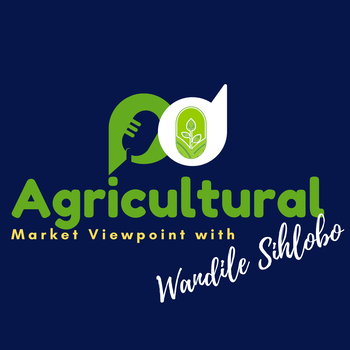
A promising summer grain outlook
Loading player...
South Africa could have yet another decent summer grains and oilseeds harvest in the 2023/24 production season. The data released this afternoon by the Crop Estimates Committee puts the preliminary area plantings for summer grains and oilseeds at 4,41 million hectares, up by 0,4% y/y (albeit down mildly from 4,48 million hectares of the intended area when the season started).
This increase is not limited to a few crops but across most summer crops except for soybeans, where plantings possibly fell by 10% y/y to 1,04 million hectares (which is still well above the 5-year average area of 867 240 hectares). The area plantings for other major grains, such as maize and sunflower seed, is also well above the 5-year average.
White maize plantings are forecast at 1,56 million hectares, up 2% y/y, with yellow maize planting at 1,08 million hectares, up 2%/y. This places the total commercial maize planting estimate at 2,64 million hectares, 2% more than the 2022/23 production season.
If we consider a 5-year average maize yield of 5,78 tonnes per hectare in an area of 2,64 million hectares, South Africa can have a maize harvest of 15,25 million tonnes. This crop would be well above South Africa’s 5-year production of 14,95 million tonnes, although down 7% y/y.
Notably, a maize harvest of this size against South Africa’s annual maize consumption of roughly 12,00 million tonnes implies that the country would remain a net exporter of maize.
Similarly, applying a 5-year average soybean yield of 2,09 tonnes per hectare on an area planning of 1,04 million hectares would lead to a possible harvest of 2,17 million tonnes. While this would be 21% down y/y, it would be well above the 5-year average harvest. Importantly, it would mean South Africa remains a net exporter of soybeans.
Sunflower seed area is forecast to recover notably to 613 200 hectares in the 2023/24 production season, up 10% y/y. With a 5-year average yield of 1,37 tonnes per hectare, this area provides a possible harvest of 840 084 tonnes (up 16% y/y).
The ground nuts area is 41 200 hectares (up 32% y/y), with sorghum at 39 600 hectares (up 17% y/y) and dry beans at 39 400 hectares (up 8% y/y).
We discuss more in this week's podcast segment.
My writing on agricultural economic matters is available on my blog: https://wandilesihlobo.com/
Podcast production by: Lwandiso Gwarubana, Richard Humphries, and Sam Mkokeli
This increase is not limited to a few crops but across most summer crops except for soybeans, where plantings possibly fell by 10% y/y to 1,04 million hectares (which is still well above the 5-year average area of 867 240 hectares). The area plantings for other major grains, such as maize and sunflower seed, is also well above the 5-year average.
White maize plantings are forecast at 1,56 million hectares, up 2% y/y, with yellow maize planting at 1,08 million hectares, up 2%/y. This places the total commercial maize planting estimate at 2,64 million hectares, 2% more than the 2022/23 production season.
If we consider a 5-year average maize yield of 5,78 tonnes per hectare in an area of 2,64 million hectares, South Africa can have a maize harvest of 15,25 million tonnes. This crop would be well above South Africa’s 5-year production of 14,95 million tonnes, although down 7% y/y.
Notably, a maize harvest of this size against South Africa’s annual maize consumption of roughly 12,00 million tonnes implies that the country would remain a net exporter of maize.
Similarly, applying a 5-year average soybean yield of 2,09 tonnes per hectare on an area planning of 1,04 million hectares would lead to a possible harvest of 2,17 million tonnes. While this would be 21% down y/y, it would be well above the 5-year average harvest. Importantly, it would mean South Africa remains a net exporter of soybeans.
Sunflower seed area is forecast to recover notably to 613 200 hectares in the 2023/24 production season, up 10% y/y. With a 5-year average yield of 1,37 tonnes per hectare, this area provides a possible harvest of 840 084 tonnes (up 16% y/y).
The ground nuts area is 41 200 hectares (up 32% y/y), with sorghum at 39 600 hectares (up 17% y/y) and dry beans at 39 400 hectares (up 8% y/y).
We discuss more in this week's podcast segment.
My writing on agricultural economic matters is available on my blog: https://wandilesihlobo.com/
Podcast production by: Lwandiso Gwarubana, Richard Humphries, and Sam Mkokeli

